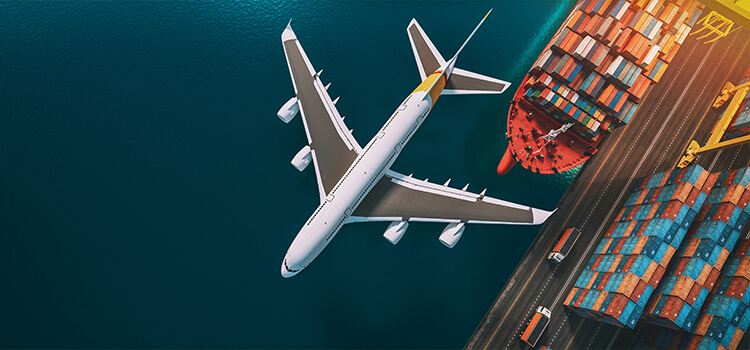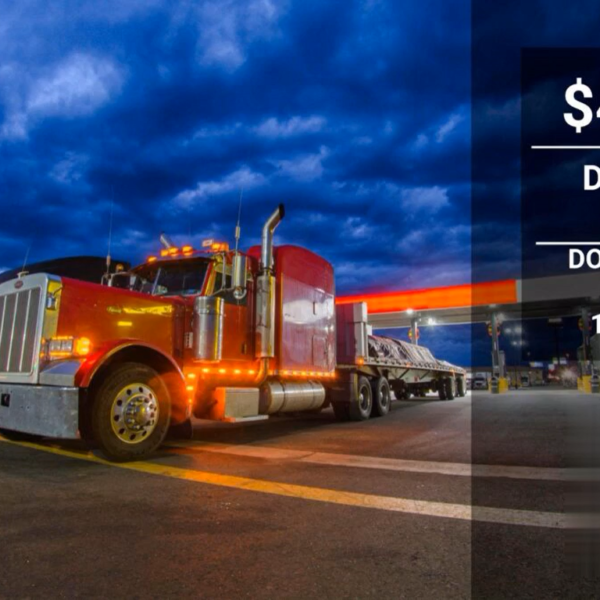Navigating global shipping can be a high-stakes game for businesses. To succeed, you need the right teammates – starting with freight forwarders. International logistics coordinators know how to get cargo to its destination.
But air freight forwarders and ocean freight forwarders have distinct playbooks when it comes to international shipping services.
With complex supply chains, understanding the differences between these players is key. Choose the right forwarder and your cargo will flow efficiently by air or sea. But choose poorly and your shipment stalls, along with customer satisfaction. Clearly, air vs ocean choice impacts transportation performance.
This post will highlight 7 key differences between air freight forwarders and ocean freight forwarders. This is to inform your cargo transportation comparison. We’ll compare air travel regulations versus sea freight rules to see how their expertise varies. We’ll also compare transit time, frequency, route options and costs. Besides this, we’ll also look at size and weight limitations for each mode. Finally, we’ll review security practices and customs clearance processes.
While air and ocean forwarders work toward the same goal, their capabilities differ. With global freight solutions, understanding these contrasts is critical. Pick the right forwarder and you gain a competitive advantage. But pick the wrong one and you fall behind.
So read on as we analyze the air and ocean shipping pros. You can also find out which player has the skills to win the cargo transportation game.
How Air and Ocean Freight Forwarders Play by Different Rules: 7 Key Differences
Shipping goods internationally involves more than just loading a plane or a vessel. To make global logistics happen, you need partners who know the ropes. Enter freight forwarders – masters at getting cargo from Point A to Point Z. What they do is:
- They book space
- Arrange documentation
- Handle customs
- Tracking shipments
- And coordinate every step of your supply chain.
But not all forwarders are created equal. Air and ocean freight forwarders play by different rules and capabilities. Understanding logistics provider differences allows you to pick the best ally for your needs. Whether it’s speed, costs, security, or customization you want, air and ocean forwarders have distinct strengths.
Let’s dive into the seven freight forwarding distinctions to consider when choosing between air and ocean freight forwarders:
1. Expertise in Air Travel Regulations vs Sea Freight Rules
When it comes to air cargo vs sea freight, air freight forwarders and ocean freight forwarders play by different rulebooks. Air freight forwarders specialize in the complex regulations for air cargo. They have mastered the TSA security rules, IATA dangerous goods policies, and air waybill paperwork required for air transport.
Ocean freight forwarders instead focus on sea freight practices. They are experts in:
- SOLAS vessel requirements
- Import/export documentation standards
- And the nuances of maritime law that govern ocean shipping.
For shippers, picking the right freight forwarding partner matches the mode of transport – air or ocean. This ensures compliance with regulations no matter how you ship.
Also Read, 4 Steps To Find The Best Logistics Services In Texas
2. Speed: Hours or Weeks in Transit Time
Air freight is the fastest option, with shipments delivered in a few days up to two weeks. Ocean shipping means longer transit times, ranging from two weeks to months. For time-sensitive air freight, forwarders offer Aircraft-on-Ground programs to meet tight schedules.
They also provide expedited customs clearance to avoid delays on both ends. Ocean forwarders aim more at cost-effective service rather than all-out speed.
3. Frequency: Scheduled Flights vs Sailings
When it comes to freight forwarder selection, the frequency of transport options should be considered. Air freight forwarders give you frequent flight options, from multiple times per day to weekly. Ocean forwarders have fewer scheduled container ship sailings – maybe a few per month or quarter. This frequency difference impacts freight forwarder selection. Air forwarders can reserve space on regular flights to major hubs or charter entire aircraft for dedicated cargo needs. Ocean forwarders contract space on commercial liners or charter vessels for clients. Ocean freight forwarders may be better suited to less urgent cargo due to their less frequent sailing schedules.
Moreover, consider transport frequency as part of freight forwarder selection. This allows shippers to match service to their timing needs.
4. Route Flexibility: Many Airports vs Set Lanes
Air freight forwarders can route shipments flexibly, tapping into airports across the globe. They craft optimal air routes and quickly switch planes and hubs if needed to avoid delays. Ocean forwarders rely on established trade lanes with set sequences of seaports. Their sea routes offer fewer ports of call and are constrained by commercial schedules.
Also Read, Benefits And Tips – Trade Automation Services For Your Logistics Business
5. Cost Comparison: Speed vs Economies of Scale
When it comes to costs, the freight shipping expertise of forwarders comes into play. Overall, air freight costs significantly more than ocean. Air freight rates are calculated by weight categories and service speed. Ocean shipping costs less due to massive economies of scale. But it involves surcharges for fuel, customs, etc. The freight shipping expertise of air forwarders is visible in charter aircraft services for urgent needs. Even yet, these are more expensive.
Freight shipping expertise of ocean forwarders is evident in their consolidated container services offered at discounted LCL rates. Shippers can achieve an optimal balance between budget and transit time. And that is due to the advantage of forwarders’ freight shipping expertise.
Also Read, The Beginner’s Guide to Freight Forwarding
6. Size and Weight Allowances: Plane Cargo Holds vs Ship Containers
Air freight is restricted by cargo hold dimensions, with limits around 119″ length x 96″ width x 118″ height. Ocean containers allow much larger freight, up to 53 feet long. For heavy cargo above 2,200 pounds per piece, the ocean is often the only option. Air forwarders optimize the weight and space of air cargo. Ocean forwarders secure flat racks and open tops for oversized freight.
7. Security and Customs Differences
Security and customs rules play different roles for ocean freight forwarders and air freight forwarders. Air freight forwarders operate like airport security and conduct X-ray scanning. They also do physical inspections per TSA guidelines. Meanwhile, ocean forwarders are more like:
- Harbor patrol
- Diligently sealing containers
- Reporting hazardous materials
- And monitoring loading docks per CBP and port authority regulations.
These aren’t the only import-export shipping variations. Air forwarders sprint through customs brokerage. In the case of time-sensitive air cargo, they provide speedy clearance. Ocean forwarders take a more methodical approach. They leverage their expertise in importer security filings to smoothly clear sea freight.
So when selecting a freight forwarder, understand that air and ocean providers follow different protocols. Know the import-export shipping variations in security and customs processes. So your freight forwarder choice aligns with your shipment needs – whether it’s meeting a tight deadline or following rigorous inspection procedures.
Also Read, What is the difference between a public warehouse and a private warehouse?
Plot the Right Course by Choosing the Best Freight Forwarder
Air and ocean freight forwarders are both essential crew members for global shipping, but they have distinct skill sets to master different voyages.
Like choosing a fast flight or a slow cruise for travel, the mode impacts speed, cost and experience. Air freight forwarders fly full throttle – optimizing urgency, flexibility and security. Ocean freight forwarders sail steady with economies of scale, capacity and compliance.
Now you can navigate the key differences and pick the right first mate for your import/export needs. An informed freight forwarder choice ensures smooth seas, whether your journey traverses the skies or waters.
Need a trusted captain to chart your cargo’s course?
The crew at Lading Logistics specializes in optimizing voyages so you can expand globally.
Let their supply chain experts plot the most strategic route ahead.
FAQs:
What is the primary difference between air freight forwarders and ocean freight forwarders?
The primary difference lies in the mode of transport they specialize in. Air freight forwarders handle air cargo, while ocean freight forwarders focus on sea freight.
How does transit time differ between air and ocean freight shipments?
Air freight is much faster, with deliveries taking a few days to two weeks. Ocean shipping, on the other hand, has longer transit times, ranging from two weeks to several months.
What are the cost differences between air and ocean freight services?
Air freight is generally more expensive due to speed and weight-based pricing, while ocean shipping offers lower costs due to economies of scale but may have additional surcharges.
How do air and ocean forwarders handle security and customs procedures differently?
Air forwarders conduct X-ray scanning and physical inspections following TSA guidelines, emphasizing speed. Ocean forwarders focus on container sealing, hazardous materials reporting, and inspection procedures following CBP and port authority regulations.
What considerations should shippers keep in mind when choosing between air and ocean freight forwarders?
Shippers should consider factors such as speed, cost, size and weight limitations, route flexibility, frequency, and security and customs processes to select the right forwarder for their specific shipment needs.



